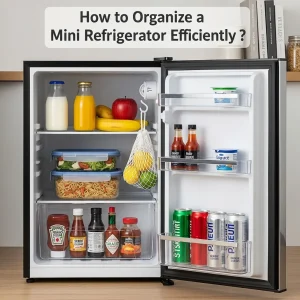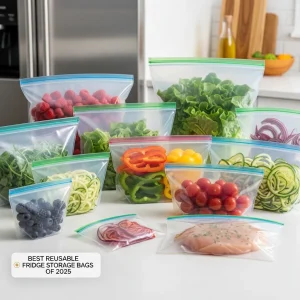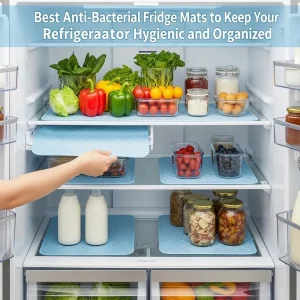Optimizing your triple door Fridge’s energy efficiency starts with a simple habit: keeping the doors closed as much as possible. I’ll guide you through the steps I use to make my own fridge run smarter and save on electricity bills.
Ever looked at your electricity bill and wondered if your refrigerator is the culprit? As someone who has tested and lived with large appliances for years, I can tell you that a triple door refrigerator is a fantastic convenience, but it can be a hidden energy drain if not set up correctly. The good news? With a few simple adjustments and habits, you can significantly improve its energy performance. I’ve done it in my own home, and I’m here to share what truly works.
Think of your fridge as a hardworking appliance that never gets a day off. Its job is to fight against room temperature to keep your food fresh and safe. Every time we introduce a variable—like warm air from an open door, warm food placed inside, or dust on its coils—we make its job harder, forcing it to use more energy. Our goal is to become its best teammate, helping it run as smoothly and efficiently as possible.
Getting to Know Your Triple-Door Refrigerator
Before we get into the tips, it’s helpful to understand what makes this type of fridge unique. Unlike traditional models, a triple door unit typically has separate compartments: one for the freezer, one for the refrigerator, and often a third flexible zone. This design is great for organization, but it also means there are more doors and more seals to maintain. Each time a door is opened, cold air escapes and warm, humid air enters, which the appliance must then cool down.
Your Action Plan for Maximum Efficiency
Here is a straightforward plan, based on my experience and industry knowledge, to get your appliance running at its best.
1. Find the Perfect Spot and Temperature

Location matters more than you might think. Always place your fridge away from heat sources like ovens, dishwashers, and direct sunlight. The surrounding ambient temperature directly affects how hard the compressor has to work. Ensure there’s enough space around the unit (check your manual for specifics, usually a few inches) for proper airflow around the condenser coils.
Now, let’s talk temperature. The U.S. Food and Drug Administration (FDA) recommends keeping your refrigerator at or below 40°F (4°C) and your freezer at 0°F (-18°C). These are the safe zones for food storage. Every degree colder than necessary can increase energy use. Use an appliance thermometer to check the actual temperature; the built-in dials aren’t always accurate.
2. Master the Art of Door Discipline

This is a big one. I’ve trained my family to be mindful of this. Every time you open a door, you’re letting the cold out. Be decisive. Know what you want before you open the door, grab it quickly, and close it securely. Avoid standing there with the door open while you decide what to snack on. It seems small, but this single habit can make a noticeable difference in your energy consumption.
3. Keep It Stocked, But Not Stuffed

A moderately full fridge retains cold better than an empty one. The mass of cold items inside helps recover temperature faster after a door is closed. However, there’s a balance. An overstuffed fridge will block internal air vents, forcing the compressor to run longer to circulate cold air and maintain a consistent temperature. Ensure you leave some room for air to move around items, especially near the vents on the back wall.
4. The Critical Step: Coil Cleaning

This is the task most people forget, but it’s arguably the most important for efficiency. The condenser coils, usually located on the back or bottom of the fridge, release heat. When they’re covered in dust and pet hair, they can’t release heat effectively. This makes the compressor work much harder and use more energy.
I make it a point to unplug my fridge and pull it out twice a year to check the coils. If they’re dusty, I gently vacuum them clean. You’ll often feel an immediate improvement in how the fridge runs afterward. Always remember to unplug the unit before you start cleaning for safety.
5. Check and Maintain Door Seals

The rubber gaskets around your doors are critical. A weak or torn seal lets cold air leak out constantly, making your fridge run non-stop. Test your seals every few months. Close a dollar bill in the door so that half is inside and half is out. If you can pull the bill out easily, the seal may need replacing or cleaning.
To clean seals, just use a soft cloth with some warm, soapy water to wipe away any sticky residue that might be preventing a tight closure.
6. Let Food Cool Before Storing

It’s tempting to pop those leftover lasagna leftovers straight into the fridge, but don’t! That hot dish is like a little heater, dramatically raising the internal temperature and forcing the compressor to kick into overdrive. Let food cool down to room temperature on your counter first (within two hours for food safety) before you place it inside.
7. Use the Special Features Wisely

Your triple door fridge likely has cool features. Use them to your advantage!
- Quick Cool or Power Cool: Use this mode only when you’ve added a large amount of new food. Remember to turn it off after a few hours; leaving it on uses a lot of extra energy.
- Vacation Mode: If you’re going away for more than a few days, use this setting. It typically turns off the refrigerator compartment while keeping the freezer running, saving a substantial amount of power.
- Flex Zone: If you have a convertible zone, set it to refrigerator mode only when you need the extra space. Otherwise, keeping it as a freezer or turning it off can be more efficient.
8. Defrosting and Ice Build-Up

If your freezer is not frost-free, regular defrosting is essential. Excess ice buildup acts as an insulator, making the freezer work harder to stay cold. Even in auto-defrost models, keep an eye on the freezer compartment to ensure it’s not building up thick ice layers.
9. Consider an Upgrade If It’s Time
If your refrigerator is over 10-15 years old, no amount of optimization might help. Newer models are vastly more energy-efficient. Look for the ENERGY STAR label. According to the EPA, an ENERGY STAR certified refrigerator uses at least 15 percent less energy than non-certified models. Sometimes, the best way to save energy is to invest in a modern, efficient appliance.
“The greatest threat to our planet is the belief that someone else will save it.”
Robert Swan
Frequently Asked Questions for How to Optimize Your Triple Door Fridge’s Energy Use?
What is the most important thing I can do to save energy with my fridge?
While all steps help, keeping the condenser coils clean and ensuring the door seals are tight will have the most significant and immediate impact on your energy efficiency. These two things directly reduce the workload on the compressor.
How much can I actually save on my bill by doing this?
It depends on your current habits and the state of your appliance, but the U.S. Department of Energy estimates that you can save between $30 and $60 a year on your electricity bill by maintaining your refrigerator properly. For a large triple-door model, the savings could be even higher.
Is it better to keep my old fridge or replace it with a new energy-efficient one?
This depends on the age and condition of your current fridge. As a general rule, if your refrigerator is more than 15 years old, a new ENERGY STAR model will likely pay for itself in energy savings within a few years, while also providing better performance and reliability.
Does the type of food I store affect energy use?
Yes. Foods with high water content, like fruits and vegetables, hold cold better than dry items. Also, as mentioned, the temperature of the food when you put it in has a major effect. Always cover liquids and moist foods; uncovered releases moisture, which makes the compressor work harder.
“We do not need magic to change the world. We carry all the power we need inside ourselves already.”-J.K. Rowling
A Final Thought
Optimizing your refrigerator’s energy use isn’t about one grand gesture; it’s about building a series of small, smart habits. It’s about being a little more mindful when you open the door, remembering to check the coils every six months, and not putting that warm pot of soup inside.
I’ve found that taking care of my appliances not only saves me money but also gives me a sense of pride. I’m extending the life of a major investment and reducing my home’s environmental impact. It’s a win-win. Start with one tip from this list today. Maybe just check those door seals. You might be surprised by how much of a difference it makes.
“The environment is where we all meet; where we all have a mutual interest; it is the one thing all of us share.” -Lady Bird Johnson







